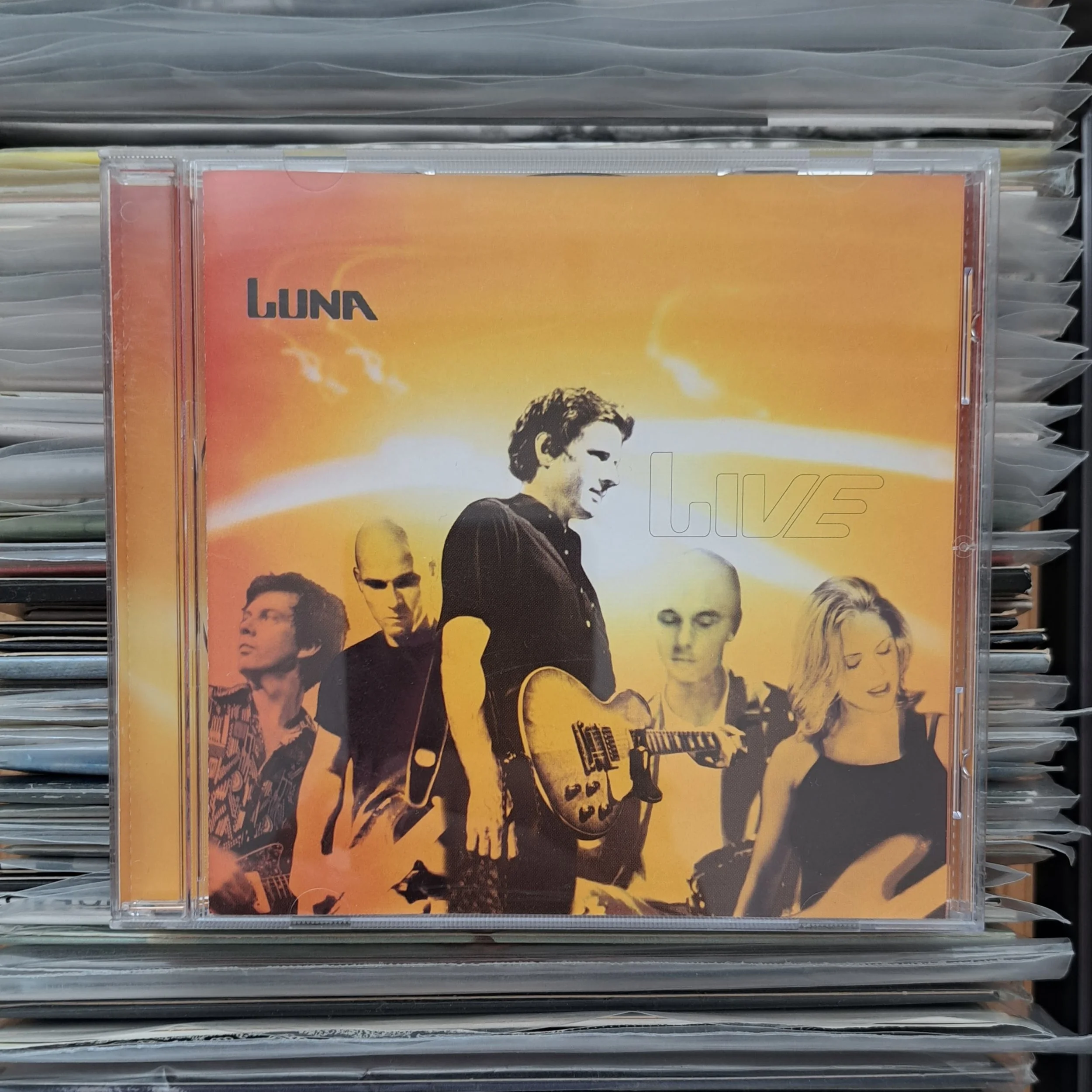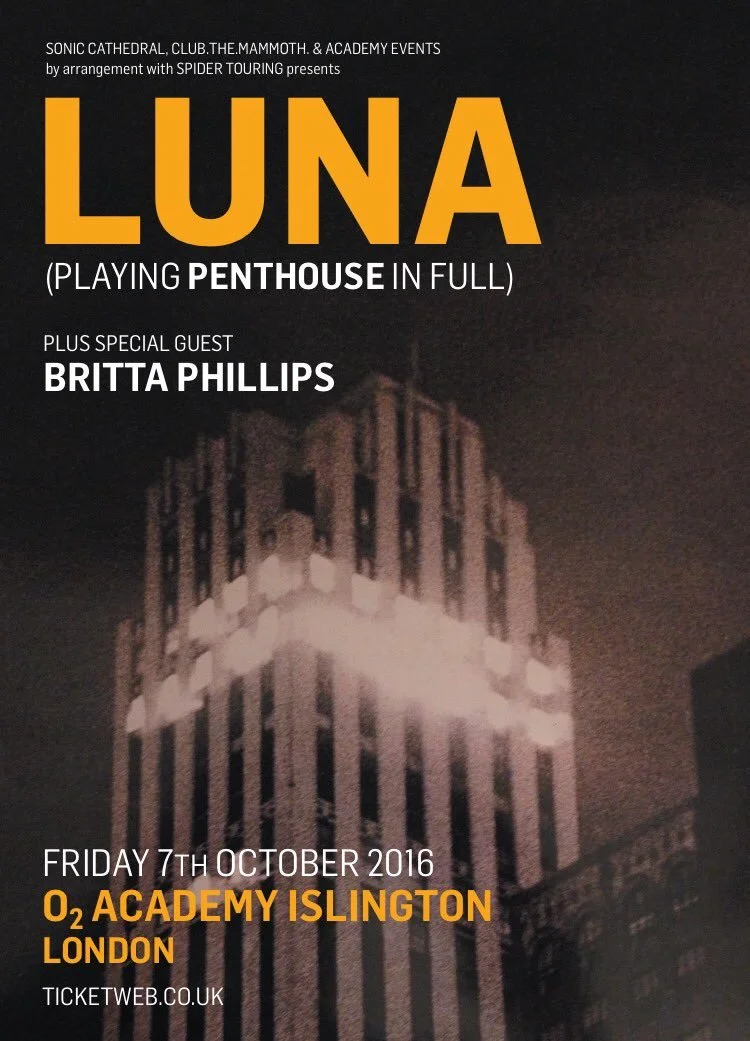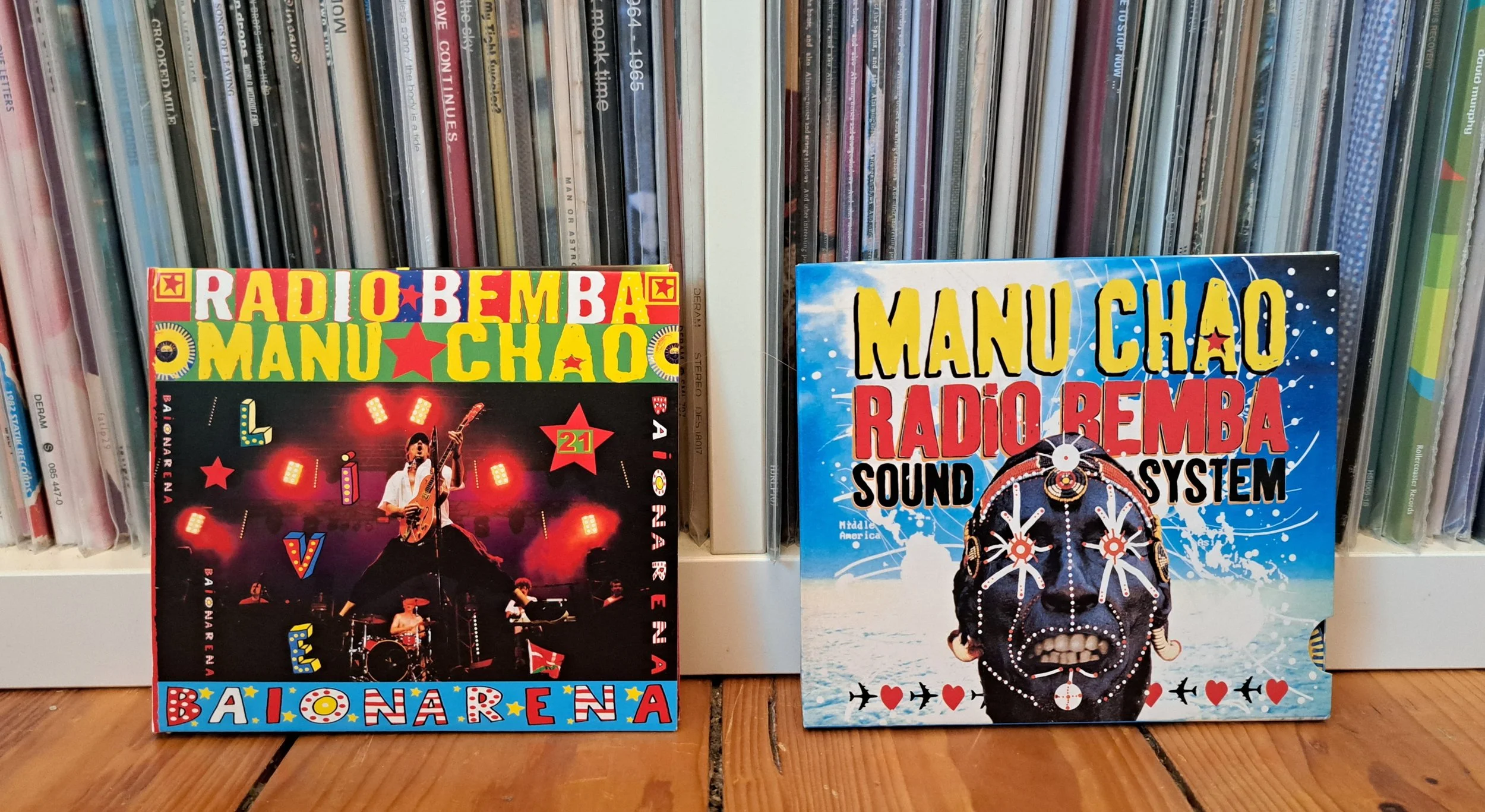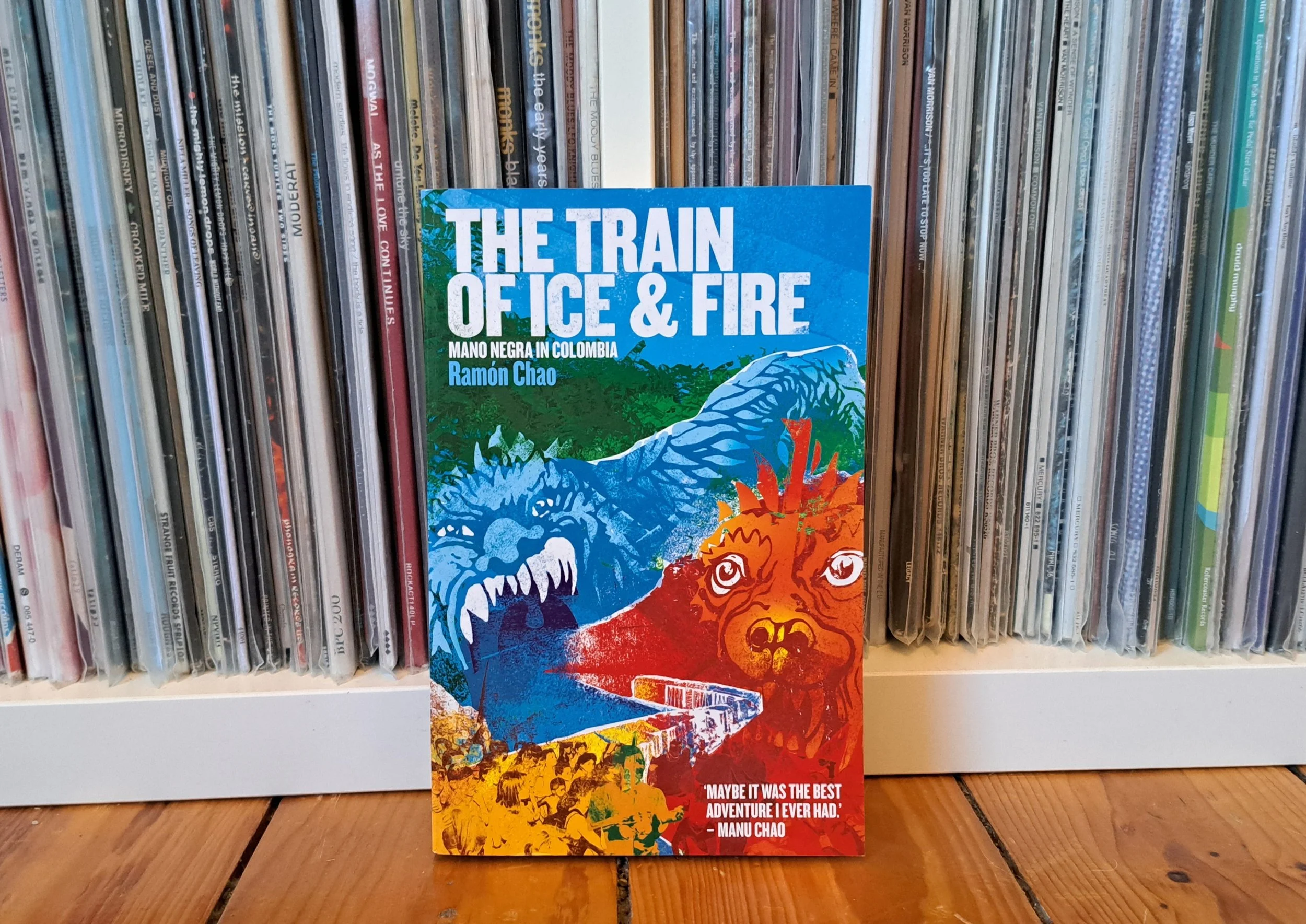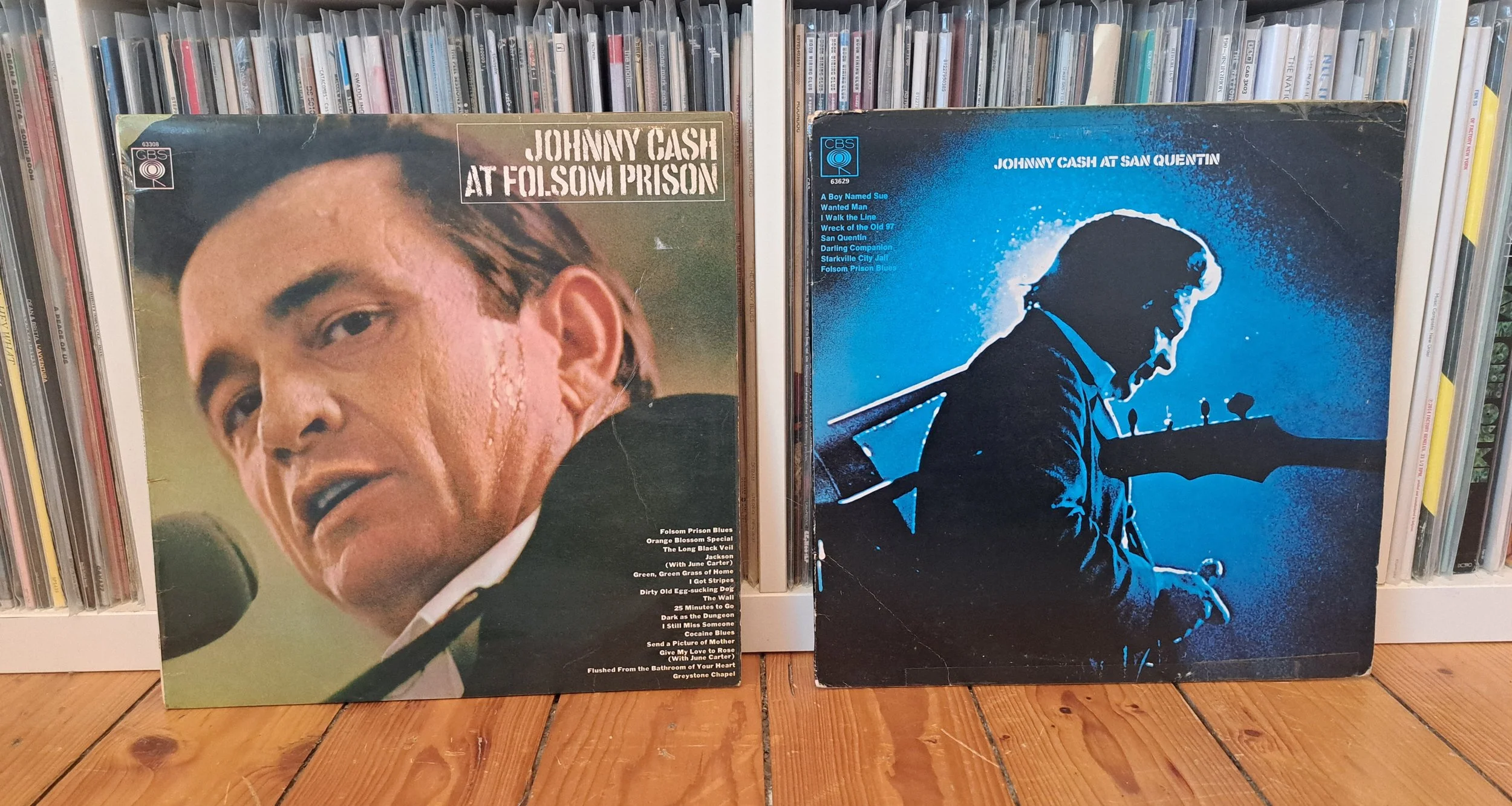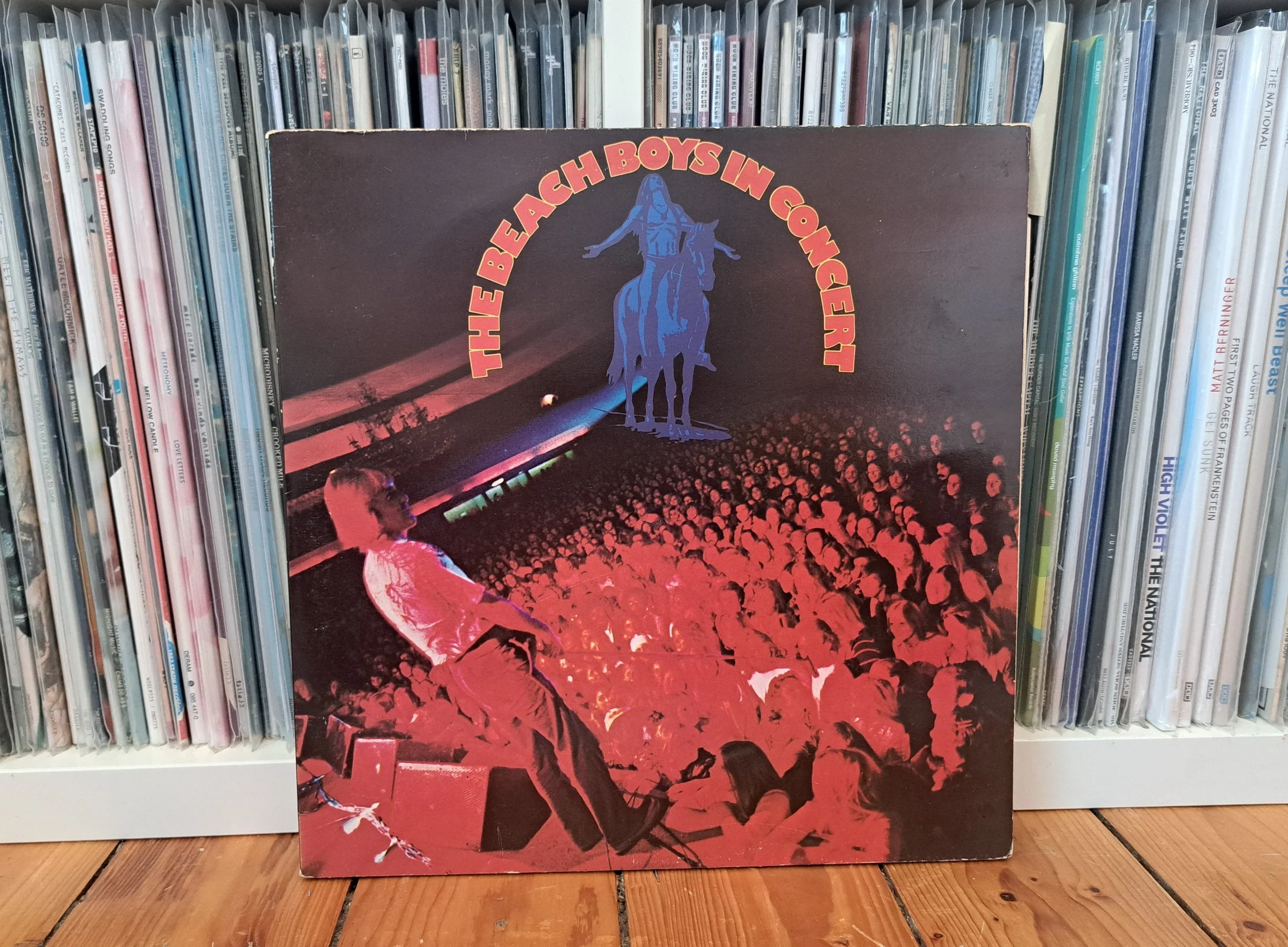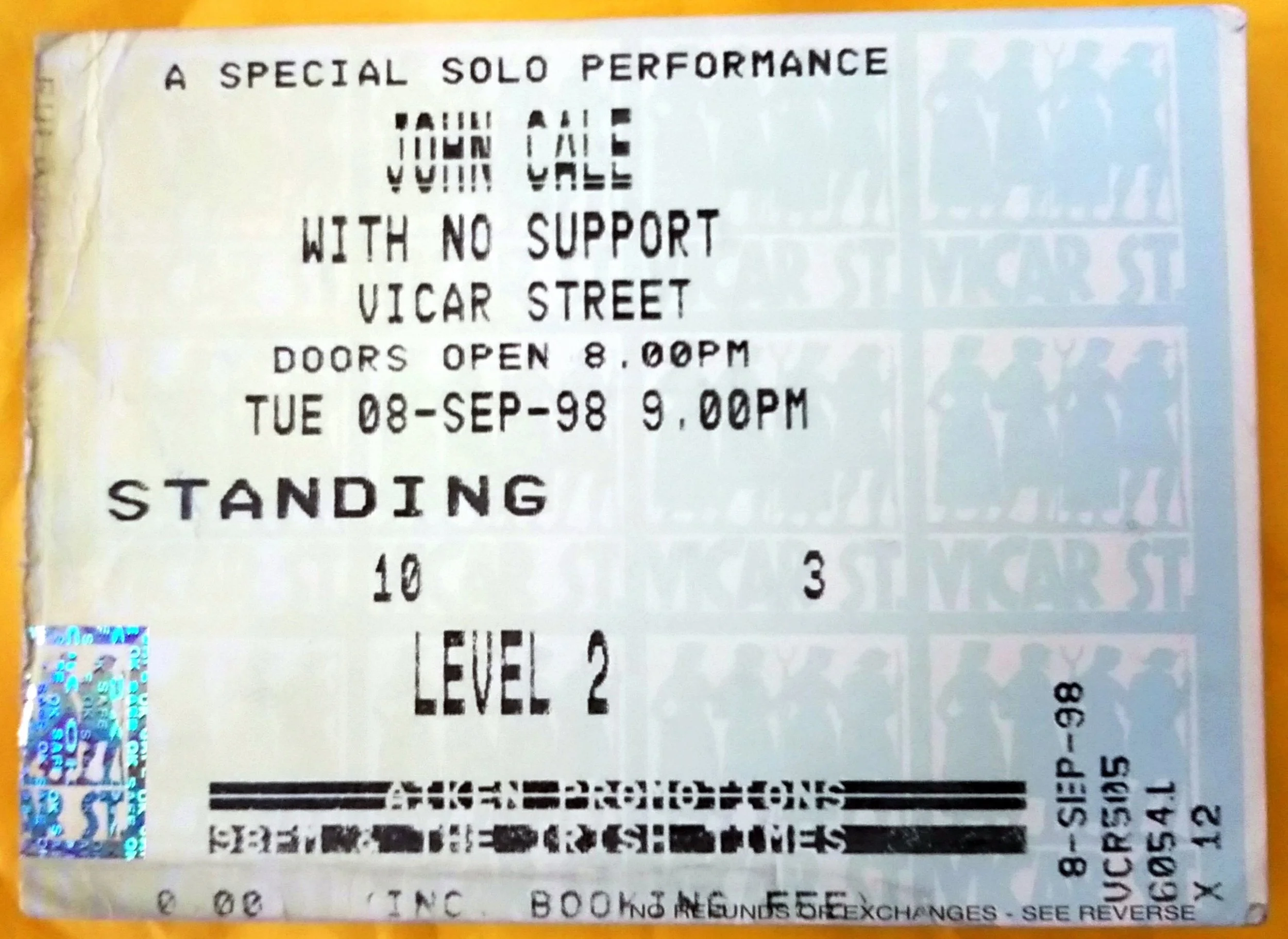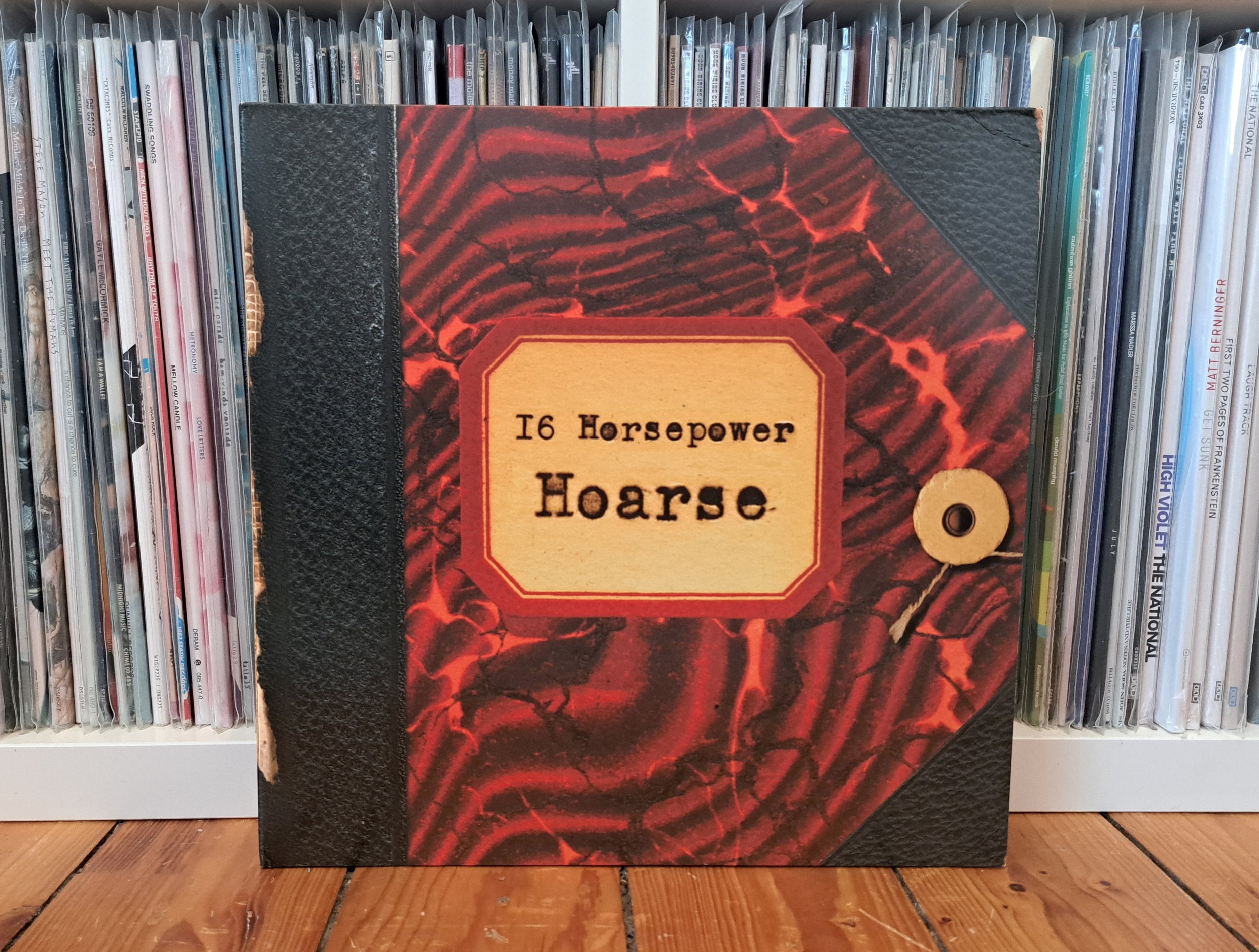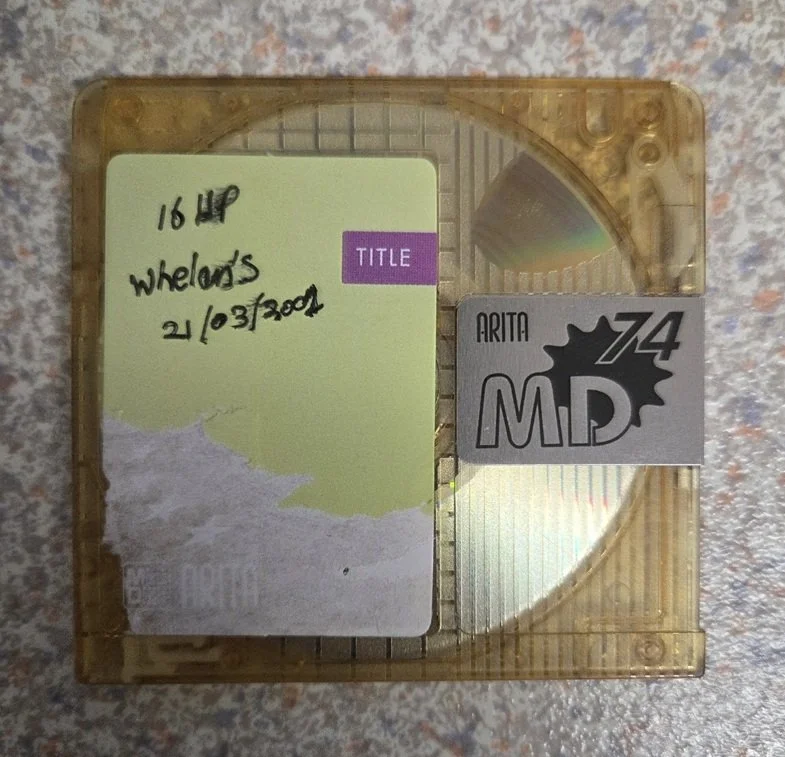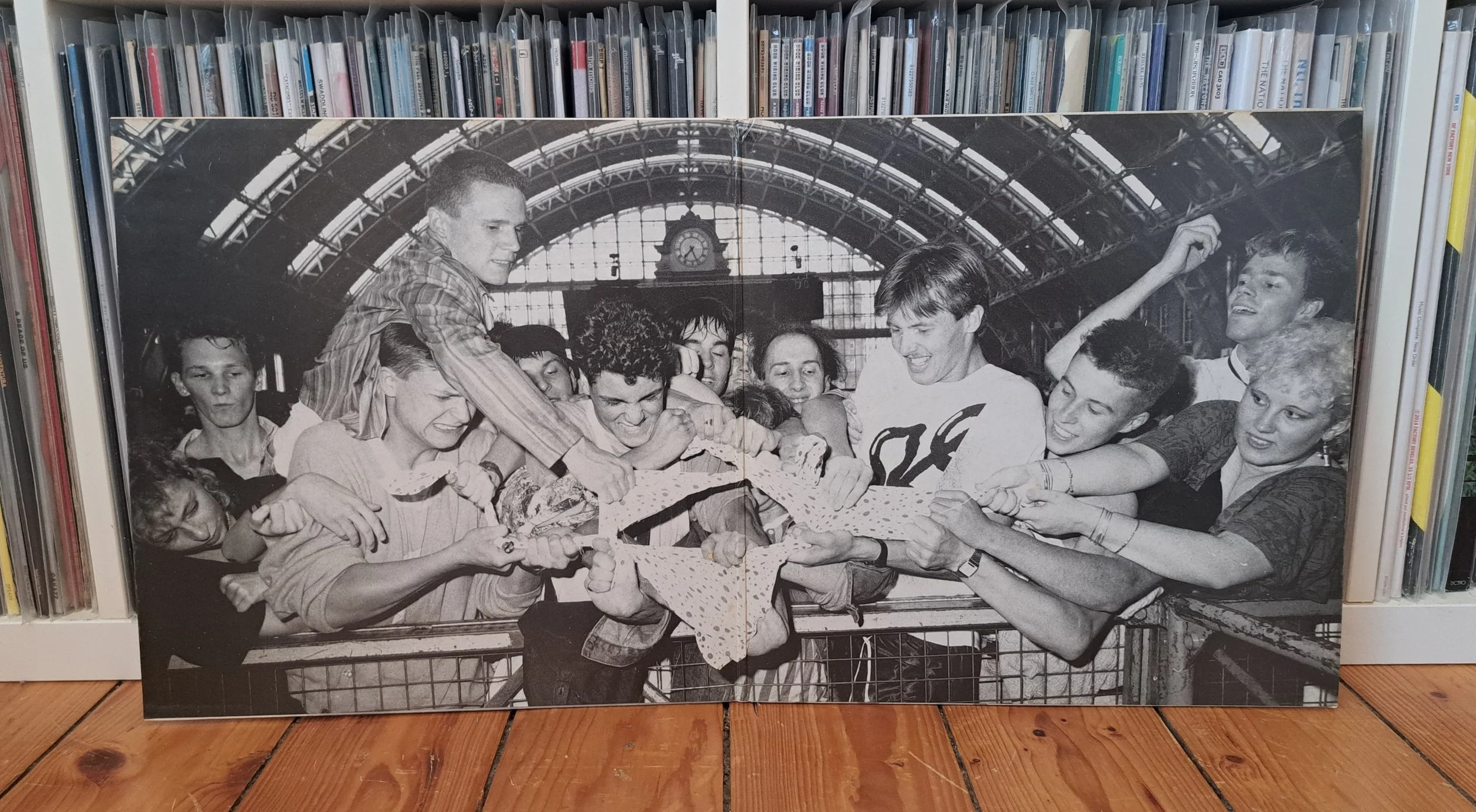Top 10 Live Albums
A Top 10 of live albums prompted by the realisation that I bought Rank by The Smiths 37 years ago this week. Taking in: the reasons why live albums are released, The Fall supporting Talk Talk in 1986, Galaxie 500 and Luna, the 5-piece Smiths, Van Morrison, bootleg live albums, John Cale in Vicar Street, Manu Chao in the Ambassador, 16 Horsepower in Whelan’s and a whole lot more.
A selection of live albums. Photograph by Paul McDermott.
In 1974 the journalist Joel Vance wrote about his dislike of live albums and listed four reasons why he believed they are released:
the performer is too lazy or messed up to get in the studio and do a real session;
the performer and the label are renegotiating the contract and playing Mexican stand-off;
the performer has left the label, and the company, not having enough studio recordings in the can, tells the engineers to pull those tapes of the Pomona Trade School concert; or
the performer has a sensitive ego and will not allow his singles to be collected into a “greatest hits” package.
(Stereo Review, August 1974)
Vance might have a point with some of his reasons but unlike him, I love a live album and found it really hard to get this list down to a Top 10. This is not a list of the greatest live albums ever, it’s a personal Top 10. It’s 100% subjective, but you know, these are the greatest ;)
I love Stop Making Sense (1984) but it’s the film I return to, not the album - it’s without doubt one of the the greatest, if not THE greatest, live concert films ever released. The second greatest concert film is probably The Last Waltz (1978) I have the album and I don’t think I’ve ever listened to it more than a handful of times, but I’ve watched Scorsese’s film countless times. So neither of these make my Top 10.
Halves - Live at the Unitarian Church (Hate is the Enemy, 2012) and Girl Band - Live at Vicar Street (Rough Trade, 2020). Photograph by Paul McDermott.
I’ve no room in my Top 10 for four live albums from some of my favourite Irish artists of the last 15 years. Halves’ Live At The Unitarian Church (2012) mostly features songs from the Dublin post-rock trio’s debut album It Goes, It Goes (Forever & Ever) (2011). I love this album and I love Halves, a band that has unfortunately been largely forgotten in recent discourse about Irish music. Halves were an incredible band who released two of my favourite Irish albums of this century: the aforementioned debut and Boa Howl (2013), its remarkable follow-up.
Girl Band’s Live at Vicar Street (2020) is an incendiary live document released for Record Store Day just before the band changed its name to Gilla Band. Lankum’s Live in Dublin (2024) is another live album recorded in Vicar Street while Fontaines DC’s Live at Kilmainham Gaol (2021) was an Other Voices lockdown broadcast.
Four fantastic live albums from four great Irish bands, but none make the list.
Fontaines DC - Live at Kilmainham Gaol (Partisan, 2021) and Lankum - Live in Dublin (Rough Trade, 2023). Photograph by Paul McDermott.
I’ve never been a big Rory Gallagher fan - probably sacrilege for someone from Cork to admit - so Irish Tour ‘74 (1974) doesn’t mean anything to me and doesn’t make the cut. Loads of people name Thin Lizzy’s Live and Dangerous (1978) as one of their favourite Irish albums. I’ve always believed that it’s one of those albums that people think they need to name check even if they haven’t actually heard it. Live and Dangerous was overdubbed in the studio but members of the band and producer Tony Visconti have disagreed for years on the extent of the album’s post-production. Visconti has claimed that 80% of the album was overdubbed. Overdubs or not, it is neither a favourite Irish album or live album of mine, so it’s not on my list.
Kaught at the Kampus (1981), the live EP of four young Cork bands (Nun Attax, Microdisney, Mean Features and Urban Blitz) recorded at the Downtown Kampus at the Cork Arcadia in August 1980 means a lot to me (I recently wrote about it for the Irish Examiner here) but it too doesn’t make my list.
Talking Heads - Stop Making Sense (EMI, 1999), The Byrds - Live at Royal Albert Hall 1971 (Sundazed, 2008) and The Zombies - Odessey & Orcale (Revisited) (Red House, 2009). Photograph by Paul McDermott.
I’ve left out live albums by some of my favourite bands. Galaxie 500’s Copenhagen (1997), recorded on the final date of the band’s last European tour in 1990, is a great album originally recorded and broadcast by Danish public radio. G500’s new live album, CBGB 12.13.88 (2025), was only released a few weeks ago so it’s too soon to add it to any list, so both of these are outside my Top 10.
The Fall, another of my favourite bands, released some great live albums: Totale’s Turns (It’s Now Or Never) (1980); A Part of America Therein, 1981 (1982) and Fall in a Hole (1983). Last Night of the Palais (2009) is a great document of the Reformation Post TLC period. There have been nearly 100 live albums released that bear The Fall’s name, the vast majority of these damage the band’s legacy in my opinion, and none of them make my list. Neither does the band’s Seminal Live (1989), one of those strange hybrid albums, one half made up of studio recordings and the other half being made up of live tracks.
The Byrds also released one of these hybrids: (Untitled) (1970). That album has an unreal 16-minute version of ‘Eight Miles High’, but the album’s not on my list. Live at Royal Albert Hall 1971 (2008) is a fantastic document of a great line-up of the band (McGuinn/White/Battin/Parsons). McGuinn said of the gig: “It was a great night, so I’m happy there is a record of it”. I’m happy too, but it doesn’t make the cut.
John Cale - Circus Live (EMI, 2007), The House of Love - Live At The Lexington 13:11:13 (Cherry Red, 2014) and The Fall - A Part of America Therein (1981) (Castle Music, 2004). Photograph by Paul McDermott.
The Zombies’ Odessey & Oracle (Revisited) (2009) is a recording of the band’s performance of that album at Shepherd’s Bush Empire, London, in 2008 in celebration of its 40th anniversary. It’s a fantastic representation of a landmark 60s psych classic. In January 2009 they played in Whelan’s and repeated the setlist from the Shepherd’s Bush gig. I picked up my copy of the live album at the merch stall in Whelan’s and Argent and Blunstone happily signed it for me. It’s a favourite but it’s not in my Top 10. I spoke to the band’s Colin Blunstone about the recording of Odessey and Orcale, a few weeks before that Dublin gig. That interview can be heard here.
Echo & the Bunnymen’s Do it Clean (2011) is a live album of the band performing two of my favourite Bunnymen albums Crocodiles (1980) and Heaven Up Here (1981) in their entirety. A hometown show, recorded at the Liverpool Olympia in December 2010, the sleeve boasts “No Overdubs. No Re-recording”. It’s an incredible live album, but it’s not on my list.
Os Mutantes - Live at the Barbican Theatre 2006 (Luaka Bop, 2007), Harmonia - Live 1974 (Grönland, 2007) and Julian Cope - Barrowlands (Fuck Off & Di, 2019). Photograph by Paul McDermott.
Other favourites I had to leave out include: Julian Cope’s Barrowlands (2019); Goat’s Live Ballroom Ritual (2013); Frightened Rabbit’s Quietly Now (2008) (a live recording of an acoustic performance of the band’s The Midnight Organ Fight); Harmonia’s Live 1974 (2007) ; Gomez’s Out West (2005); Efterklang & The Danish National Chamber Orchestra’s Performing Parades (2009); The Cinematic Orchestra’s Live At The Royal Albert Hall (2008); Spiritualized’s Royal Albert Hall (2007), Lou Reed’s Rock ‘n’ Roll Animal (1974) and Wilco’s Kicking Television: Live In Chicago (2005).
The Decemberists’ We All Raise Our Voices To The Air (Live Songs 04.11 - 08.11) (2012) is a triple live LP which features a great 12-minute version of ‘The Mariner’s Revenge Song’, one of my favourite Colin Meloy songs, but the album doesn’t make my list. Neither does Colin Meloy Sings Live! (2008), another favourite live album of mine. I love Meloy’s live version of ‘California One/Youth and Beauty Brigade’, the final song from Castaways and Cutouts. Meloy segues the song into ‘Ask’ by The Smiths. It’s a gorgeous moment, from a great album but it doesn’t make my list.
Amon Düül II - Live in London (LP, United Artists, 1973). Photograph by Paul McDermott.
In Krautrocksampler Julian Cope writes that, “the greatest Krautrock image of all is surely the sleeve of Amon Düül II’s Live in London.”
Cope continues, “A gigantic German-helmeted Stormtrooper insect claws the London Post-Office tower from its foundations as flying saucers lay the city to waste overhead.” It’s a powerful image and I love this record but it’s not on my list.
So all those are out. What’s in?
10. Luna
Live
(Beggars Banquet, 2001)
I mentioned above that two live albums by Galaxie 500 didn’t make this list. Live by Luna, the band Dean Wareham formed after G500’s demise, was always going to make my list.
In the mid-90s I worked in Comet Records on Washington Steet in Cork for their big annual 50% New Year’s sale. I seem to remember doing this for two years in a row.
I manned the door and managed the queue. The small shop would fill up and then it was one in and one out. I put record sleeves back on the shelves and I unlocked the cassette displays when someone wanted a tape.
These were long days, I loved them. Every minute of it, for God’s sake I was working in a record shop!
The first time Comet’s Jim O’Mahony asked me if I was interested in the gig he offered me £100 punts for the day.
I thought about it for a second and then asked if I could have £150.
Jim hummed and hawed.
I was losing the gig. How about shop credit in the sale instead of cash?
Jim agreed.
I then asked if I could come in before the sale and take my pick of records.
Jim agreed.
£150 punts in Comet shop credit, but everything was marked down by 50%. This was not to be sniffed at in the mid-90s. I can still remember which albums in my collection came directly from these Comet sales. Most of my Beatles’ vinyl are mid-90s represses courtesy of Comet shop credit.
Luna’s Penthouse came from shop credit in Comet. It’s one of my all-time favourite albums. It’s a masterpiece. Luna played Dublin on 30 October, 2002 in Spirit, formerly HQ - the Hot Press Hall of Fame - and latterly The Academy.
I missed it. I have no idea where I was. How could I have missed this gig?
When I listen to Luna’s Live I imagine that this is the gig I missed in Dublin. While writing this I remembered that my friend Pádraig Collins had reviewed the album for The Irish Times. I asked Pádriag if I could quote from his review but instead I’m sharing the whole thing below.
It’s that good.
The last line is simply one of the most honest sentences anyone’s written in a review. Unashamedly honest.
Luna - Live *****
(Beggars Banquet)
Listening to Luna is falling in love for the first time and the best summer of your life all in one. This is taken from three of the best gigs we never saw. Slow, languid guitar lines. More musical ideas in each song than most manage in an album. More lyrical drama than most manage in a lifetime. And real, glorious songs that soar and swoop and generally rock your world. The songs grow in their live renditions, despite being stripped of studio keyboards and trickery. Chinatown and Sideshow By The Seashore are awesome, so are the other 12. God I love this band.
by Pádraig Collins
A few years ago I read Original Rockers (Faber & Faber, 2015), Richard King’s account of spending a few years in the 1990s working behind the counter of Bristol’s Revolver Records. I loved it, it reminded me - as if I needed reminding - of why I love record shops. It also reminded me of my TWO days working in Comet for those New Year’s sales 30 years ago. I don’t normally give books away but as soon as I finished it I passed it on to Comet’s Jim O’Mahony.
I finally got to see Luna when they reformed and played London in 2016. They performed Penthouse in full.
God I love this band.
9. Manu Chao
Radio Bemba Sound System
(Virgin, 2002)
Holidaying in France in 2000, we’re sitting in the back of a car that’s careening along dark Provence backroads. Giles, our old French friend, is in the passenger seat and his older cousin is driving. Mano Negra’s ‘King of Bongo’ is blaring out of the car’s stereo and the lads are singing along at the top of their lungs. This was our introduction to the music of Manu Chao.
We were hooked.
We had tickets for Chao’s 2002 Whelan’s gig but at the last minute, due to huge demand, it was moved to the Ambassador Theatre. It remains one of the greatest gigs I’ve ever witnessed. We were two of the very few Irish people in the audience surrounded by fanatical Spanish and French fans. Basque, Catalan, Cuban and Palestinian flags hung over the balcony, banners adorned with French, Catalan and Spanish slogans were hoisted and waved. The atmosphere was revolutionary, Chao was a superhero to this crowd. It was a cauldron. By the time Chao hit the stage he had been on the road since March 2000. Two full years. In that time he had followed Clandestino, his 1998 solo debut album, with Próxima Estación... Esperanza, its 2001 million-selling follow-up.
We still talk about this gig. I’m a massive fan of Chao’s albums but Radio Bemba Sound System, Chao’s live album of that tour (it’s also the name of the backing band that accompanied him), is the closest approximation of his power, passion and truth. It’s stunning.
Chao and his Radio Bemba Sound System returned to Dublin the following year in June 2003, this time he had really crossed over and the gig was in the Point Depot. I unfortunately missed this concert because I had promised to accompany my teenage nephew to see Metallica in the RDS on the same night. My nephew spent most of the gig on my shoulders.
It was his first gig and he loved it. I didn’t.
After the gig I got my nephew onto a bus and then met up with some friends who had made it into town from the Chao gig. I had to sit there and listen to them talk about Manu Chao.
I still remind my nephew of the sacrifice I made.
Chao’s second live album, 2009’s Live Baionarena is another essential live album, a film of that gig is below.
Live Baionarena (2xCD + DVD, Because Music, 200) and Radio Bemba Sound System (CD, Because Music, 2007). Photograph by Paul McDermott.
The Train of Ice & Fire by Ramón Chao (English translation by Ann Wright) (Route Publishing, 2009). Photograph by Paul McDermott.
For fans of Chao and Mano Negra I highly recommend The Train of Ice & Fire written by Manu’s father Ramón Chao (a renowned Spanish journalist and writer). It’s an account of Mano Negra’s 1993 tour of Colombia by train. The blurb sums it up perfectly: “Columbia, November 1993: a reconstructed old passenger train is carrying one hundred musicians, acrobats and artists on a daring adventure through the heart of a country soaked in violence. Leading this crusade of hope is Manu Chao with his band Mano Negra.”
8. Talk Talk
London 1986
(Pond Life, 1999)
London 1986 was recorded at the Hammersmith Odeon in London on 8 May 1986 on the band’s tour to promote their third album, The Colour of Spring.
Three of the songs played in this set come from The Colour of Spring: ‘Life’s What You Make It’, ‘Living In Another World’ and ‘Give It Up’.
The other five songs are all taken from the band’s second album, It’s My Life: ‘Tomorrow Started’, ‘Does Caroline Know’, ‘It’s My Life’, ‘Such a Shame’ and ‘Renée’. According to setlist.fm this wasn’t the full set played by the band that night in London, but it’s all we’ve got and it’s an unbelievable record of the band at a crucial stage in their career.
On 11 July, two months after the Hammersmith Odeon gig that’s represented on London 1986, Talk Talk played at the Montreux Jazz Festival. That night in Montreux the band played a near identical set to the full gig at Hammersmith. That gig was released on DVD as Live at Montreux 1986 and can be viewed below. A week after Montreux, on 18 July, Talk Talk played at the Imperial War Museum at Duxford Airfield in Cambridge. Talk Talk were supported by The Fall. A line-up that feels as incongruous today as it must have done in 1986: The Fall circa Bend Sinister and Talk Talk circa The Colour of Spring. Chalk and cheese.
According to the Cambridge Evening News, 1,800 people attended the gig in an aircraft hangar. The newspaper called The Fall, “stilted, un-melodic, pretentious nonsense.” The review continued, “but it was obvious that their fans - and there were a lot there - loved them.”
“And finally Talk Talk,” continues the review. “Everything became a little more professional when they came on stage - the sound improved, the lighting was most impressive, and the band seemed to enjoy themselves more than their predecessors.”
An unintentionally hilarious review and a fairly decent approximation of why I love both bands!
Talk Talk played just seven more gigs on The Colour of Spring tour, finishing on 20 September 1986 in Ibiza. It was the band’s last ever gig. The band spent much of the following year in the studio.
London 1986 is the bridge between The Colour of Spring and what came next…
Spirit of Eden and Laughing Stock came next.
At Folsom Prison/At San Quentin (CBS-Columbia, 1968/1969). Photograph by Paul McDermott.
7. Johnny Cash
At Folsom Prison/At San Quentin
(CBS-Columbia, 1968/1969)
It starts with, “Hello, I’m Johnny Cash” and the crowd erupts, he launches into ‘Folsom Prison Blues’ and by the time he gets to the second verse with it’s famous line, “I shot a man in Reno, just to watch him die”, the hooping and hollering starts. I can still remember hearing it for the first time and being stunned, it’s Johnny Cash, in a prison, performing for an audience of prisoners. Singing about cold-blooded murder. Unreal.
Without doubt, these are two of the greatest live albums ever recorded. I consider them a pair, they were in my home growing up, they were my introduction to The Man in Black. My copies are battered, At San Quentin is held together with Sellotape. The vinyl on both of these LPs is wreaked, grooves ground down from overplay. I updated these to a 2xCD set years ago but I can’t get rid of the LPs. They mean a lot to me.
At Folsom Prison (1968) was Cash’s first live album. It changed his career, its lead single ‘Folsom Prison Blues’, a live version of his 1956 Sun Records’ single, provided him with his first hit in four years making the Pop, Country and R&B Charts. Columbia’s press material at the time described At Folsom Prison as “an overpowering album”. They were spot on. Buoyed by the success of At Folsom Prison Cash released At San Quentin, his second live album the following year. At San Quentin was also filmed for a Granada documentary (it can be watched below).
Before At Folsom Prison Cash was washed up, after At San Quentin he was one of the biggest music stars in America with his own TV variety show, The Johnny Cash Show.
Columbia Records’ print advertisements for Cash’s At Folsom Prison (May, 1968) and At San Quentin (October, 1969).
6. The Beach Boys
The Beach Boys In Concert
(Brother/Reprise, 1973)
In 2012 I saw The Beach Boys in Wembley Arena on the last night of “The 50th Anniversary Reunion Tour”. It was emotional seeing Brian Wilson, Mike Love, Al Jardine, David Marks and Bruce Johnston power through a 55-song set.
FIFTY FIVE!
Emotional AND Exhausting. Live - The 50th Anniversary Tour (2013) is the 2xCD live album of that gig but its release was mired in controversary due to the addition of post-production Auto-Tune.
The Beach Boys live album I return to is The Beach Boys in Concert (1973), the third live album released by the band after Beach Boys Concert (1964) and Live in London (1970).
It’s a double album released in November 1973 and features a compilation of live tracks recorded during the band’s Winter 1972 and Summer 1973 tours. Carl, Dennis, Mike and Al are joined by Blondie Chaplin (guitar) and Ricky Fataar (drums). Chaplin and Fataar were two South African musicians who had played in a band called The Flames (later to become The Flame). Carl heard them in London and produced their first album which was released on The Beach Boy’s Brother Records label.
The Beach Boys in Concert - inner gatefold.
The set features four songs from the previous year’s Holland (‘Sail on Sailor’, ‘The Trader’, ‘Funky Pretty’, and ‘Leaving This Town’), one of my favourite BB’s album. The gorgeous ‘Marcella’ from Carl And The Passions - “So Tough”, another 1972 album by the band, also makes the set.
‘Let the Wind Blow’ and ‘Darlin’’ both from Wild Honey (1967) are performed and four songs from Pet Sounds (1966) are included: ‘Sloop John B’, ‘You Still Believe in Me’, ‘Caroline No’ and ‘Wouldn’t It Be Nice’. ‘We Got Love’ is a Love, Chaplin and Fataar song from the Holland sessions that never appeared elsewhere. The rest of the set is made up of big singles, ‘California Girls’, ‘Good Vibrations’, ‘Heroes and Villains’ and more.
The Beach Boys touring band of 1972 and 1973 were a seriously good rock band and The Beach Boys in Concert is evidence of the band’s powers, it’s without doubt the greatest Beach Boys live album. On the strength of this album, Rolling Stone voted the BB’s Band of the Year in 1974. After this new material was expunged from the set and the BB’s became the Endless Summer hit machine. Mike got his way and it was all about cars and girls. The Beach Boys in Concert illustrates that they had so much more left to give.
5. Van Morrison
It’s Too Late To Stop Now
(Warner Bros, 1974)
In his review of Morrison’s live album Joel Vance (Stereo Review, August 1994) thought the sound was “good”, but that the performance was “monotonous”. 50 years on from Vance’s mediocre review, It’s Too Late to Stop Now is regarded as one of the greatest live albums ever released.
“Possibly the best example of Morrison’s command of soul-oriented pop tunes, this double set in-person concert smacks with guts and emotion,” wrote Billboard in its original review back in March 1974.
The magazine continued: “‘These Dreams of You’ and ‘I Believe to My Soul’ capture Morrison’s powerfully distinctive voice, surrounded by what he calls the Caledonia Soul Orchestra.”
In 2019 Rolling Stone named it one of the singer’s essential albums and wrote that, “Morrison can be a legendarily surly performer, but when he’s on, he can also be one of rock’s most electrifying old-school showmen.”
“The irrefutable proof lies on this double LP,” continued the feature.
My 2016 pressing, a 2xLP triple gatefold, was a gift from a graduating student. The student, a huge Morrison fan, couldn’t quite believe that I hadn’t heard It’s Too Late to Stop Now. I said that I had enough Morrison albums and could probably do without it. He shook his head in disapproval. He was right and I was wrong. This is an extraordinary live album.
I recently wrote about working stage at three Morrison gigs back in 1996 (Van Morrison at 80). Though 22 years after the shows recorded on It’s Too Late to Stop Now, there were moments during those gigs when the magic was still there. An incredible performer.
4. John Cale
Fragments of a Rainy Season
(Hannibal, 1992)
Fragments of a Rainy Season is a solo live album recorded by Cale at various gigs during his 1992 tour. It wasn’t his first live album (Sabotage/Live was recorded over three night at CBGBs in 1979 and John Cale Comes Alive is a 1984 set recorded at the Lyceum in London) but it’s his greatest.
Vicar Street opened its doors in September 1998 and John Cale was one of the first musicians to play at the famed Thomas Street venue. My old ticket stubs confirm that Martin Stephenson played on 2 September and he was followed a few days later by John Cale on 8 September. Cale at Vicar Street was a truly exciting prospect, a founding member of the Velvets alone centre-stage sitting behind a grand piano. He looked exactly like he did in the film version of Songs For Drella eight years earlier. The set he played that night was almost identical to the set on Fragments of a Rainy Season.
Cale has returned to Ireland loads of times in the intervening 27 years, I’ve seen him with a full band and solo. I saw him in the Barbican in 2018 when he celebrated his 75th birthday and was joined on stage by fellow Welsh musician Cate Le Bon. But nothing beats that night in Vicar Street and nothing beats Fragments of a Rainy Season.
John Cale, Vicar Street ticket stub (8 September, 1998).
Sabotage/Live (Spy/IRS, 1979), Le Bataclan ‘72 (Get Back, 2004), Circus Live (EMI, 2007), John Cale Comes Alive (ZE/Island, 1984), and Live (MIG/Rockpalast, 2010). Photograph by Paul McDermott.
3. The Velvet Underground
1969: The Velvet Underground Live with Lou Reed
(Mercury, 1974)
As mentioned above Lou Reed’s great Rock ‘n’ Roll Animal (1974) isn’t on this list, however another live album featuring Reed released the same year is: 1969: The Velvet Underground Live With Lou Reed. In the mid-90s I shared a flat in Cork with my old friend (and Flywheel guitarist) Kieran Curtin. Between us we had the Velvets’ albums but Kieran also had this live album.
We both loved the Velvets and loved their varied studio output, but it was Kieran’s copy of this live album that we played - to death.
1969 represents the Velvets when Reed was firmly in control, its the Velvets of Reed with Morrison, Tucker and Yule. This is the Velvets recorded on tour prior to the release of Loaded (1970).
In his 1979 NME review of a UK budget-priced reissue of the record Paul Morley wrote: “1969 is a classic rock album, a definitive combination of styles and statements from the most naïve and pure part of Lou Reed’s development, when he was still in love with rock ‘n’ roll as myth rather than what he could do with that myth.”
“It is, give or take Max’s Kansas City,” continued Morley, “a different package of atmosphere altogether, the greatest live album of all time, and the best collection of - and thus the best introduction to - Lou Reed’s early shots.”
Morley argues that the Velvets as represented by 1969 is, “when the Velvets were at their best”. I used to think this type of opinion was mental. The Velvets to me were the first two albums. But, as much as I love John Cale (and I’m someone who files Drella under “C” and not “R”), now I believe that the very best of the Velvets is represented on the self-titled third album and 1969: The Velvet Underground Live With Lou Reed - possibly one of the greatest live albums ever released.
2. 16 Horsepower
Hoarse
(Glitterhouse, 2000)
16 Horsepower were a fantastic band. They released four albums, two on A&M and two more on the German indie label Glitterhouse Records. Hoarse is a live recording from 1998 and was released a few months after Secret South, the band’s Glitterhouse debut. Hoarse was recorded in May 1998 at the 500 capacity Bluebell Theater in Denver, Colorado - a hometown show for the band.
The hometown nature of the gig ensured an electric atmosphere. Hoarse opens with ‘American Wheeze’ and just thinking about the sound that David Eugene Edwards managed to elicit from his Chemnitzer concertina still sends shivers down my spine. This is Americana - but not as you know it. Hoarse is a thrilling album which perfectly showcases the band’s fusion of Appalachian and gothic folk with blues-based rock and intelligent post-punk. 16HP were amazing live.
16HP’s David Eugene Edwards explained the band’s unique sound to me when I interviewed him before the band’s Irish debut at Whelan’s in March 2001:
“I’ve always had an interest in traditional music from all over the world, primarily Appalachian music was really important to me for a long time but at the same time I like heavy music as well so I think that the music we make is a mixture of the two. I can’t really put myself fully in to one or the other so I kind of mix them I guess.”
Edwards gave me his thoughts on the as then unreleased Hoarse:
“People were always asking for it, you know, pretty much since we started people were like “Oh, ye should make a live record”, and I don’t really care for live records, to tell you the truth so I had never really thought about it but people kept talking about it so we said OK and I haven’t really heard it ‘cause I can’t even listen to it. We were just making it available for the people who came to the shows, as something special, that only they could get there, but then they started selling it through the mailing list at Glitterhouse and it did well enough so now they’re releasing it everywhere.”
The Hoarse setlist is made up of songs from the band’s first two albums: 1996’s Sackcloth ‘N’ Ashes and 1997’s Low Estate and three cover versions: Creedence Clearwater Revival’s ‘Bad Moon Risin’’, The Gun Club’s ‘Fire Spirit’ and Joy Division’s ‘Day of the Lords’. In that old interview I also asked Edwards about the choice of covers played by 16HP:
“It’s just particular songs that I really like and it doesn’t make a difference to me where they come from and what type of music it is – if it’s a good song, then it’s a good song. We don’t play cover songs that often; it’s just something that we’ve recently started to do, for fun really. We just chose songs that have some meaning to us that we think we can do it some justice to as far as playing them.”
The full interview with David Eugene Edwards can be read here.
I bootlegged 16HP’s gig in Whelan’s in 2001. While my 16HP MiniDisc remains a private keepsake, an astonishing record of one of my favourite gigs of all time, Hoarse easily makes No. 2 on my list.
16 Horsepower live in Whelan’s, Dublin (21 March, 2001). Photograph by Paul McDermott.
1. The Smiths
Rank
(Rough Trade, 1988)
The day I got my Inter Cert results I went into Cork with a few school friends. They each bought New Jersey by Bon Jovi on tape. I bought Rank. They took the piss.
Fuck them.
Rank was released a year after The Smiths had broken up. I’ve written before about my love of The Smiths (The Smiths - Singles). I had discovered them in 1986 and was devastated when they split the following year.
I was fully onboard with Moz’s solo career. ‘Suedehead’ was released in February 1988 reaching No. 2 in the Irish Singles Chart (No. 5 in the UK Singles Chart). ‘Everyday is Like Sunday’ followed in May reaching No. 3 (No. 9 in the UK Singles Chart). In between these two singles came Viva Hate in March. But excitement levels reached fever pitch when it was announced that we’d get a posthumous live album. Smash Hits ran a competition to win a cloth wall hanging of the album cover. It was the only time I ever entered a Smash Hits competition.
Rank is my favourite live album by a mile. It was recorded at the National Ballroom in Kilburn on 23 October 1986 during the second UK leg of the band’s 1986 tour in support of The Queen is Dead. The band played 21 songs that night in Kilburn but only 14 made the cut for the album. Various bootlegs have tried to fill in the missing songs from audience recordings.
A recording of Sergei Prokofiev’s ‘Montagues and Capulets’ from Romeo and Juliet is played as the band take to the stage and then it’s straight into ‘The Queen is Dead’. It’s an unbelievably good start to a brilliant live album. This is the five-piece Smiths, Craig Gannon on second guitar beefs out the sound, and the band are on fire.
37 years later I still get a thrill when ‘(Marie’s The Name) His Latest Flame’ morphs into ‘Rusholme Ruffians’.
I wonder do my old school friends still get a thrill hearing Jon Bon Jovi sing: “Shake it up, just like bad medicine.”
Fuck them.
Alexandra Bastedo photographed by John D Green taken from his book Birds of Britain (The Bodley Head, 1967).
Rank inner gatefold - fans fighting over Moz’s shirt. Photograph by Ian Tilton taken at the Manchester G-Mex on 19 July 1986. Photograph by Paul McDermott.







